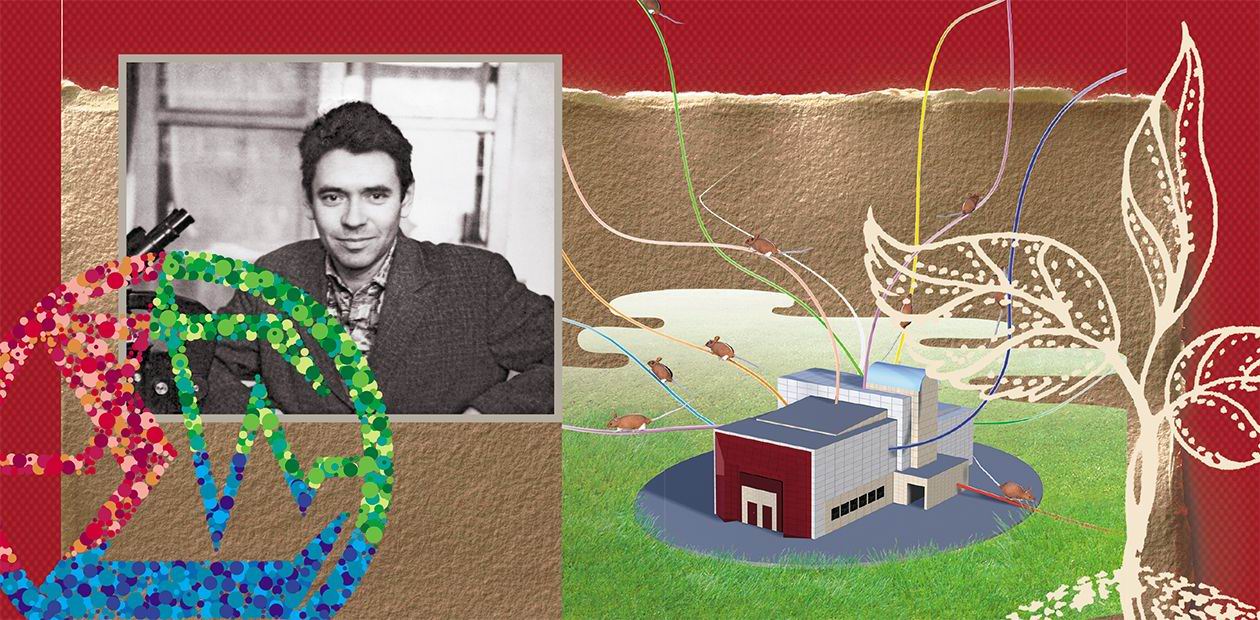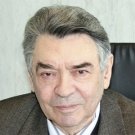The Weissmanist–Morganist Strongold in Siberia
Nowadays, genetics is one of the most swiftly developing and demanded sciences in the world. However, in the middle of last century, “genetics” (and its Soviet “synonyms” – a “pseudoscience” or even an “imperialist harlot”) was a trendy swearword among the laymen. These dark times in the history of national biology were named “lysenkovschina” after its leader, Trofim Lysenko, a known experimentalist and selectionist. The persecution, which lasted for over a quarter of a century and employed a whole range of tools and tricks of the repression apparatus of the Communist Party, ended only in 1964 with the resignation of Nikita Khrushchev, who actively supported Lysenko. And even though the late fifties saw a rise in genetic research, the founding of the Institute of Cytology and Genetics far beyond the Ural mountains was a daring challenge to the top officials of the Soviet state, party and science bureaucracies
I rightfully consider myself an old-timer of Akademgorodok: I came here in May of 1958 with the first landing party from Moscow State University. About a hundred people from our cohort went straight to Novosibirsk, and not only biologists.
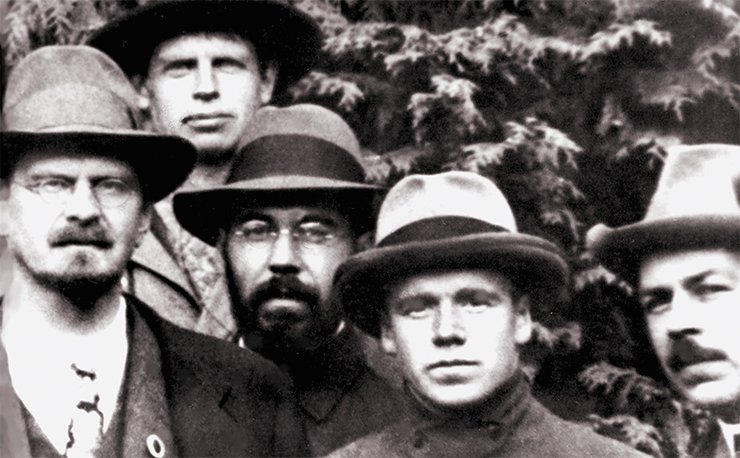
At that time, I had already been assigned to go South, to the Krasnodarskiy Krai, but having learned, well before graduation, about the founding of the Siberian Branch of the Soviet Academy of Sciences we, a crowd of students, went straight to the director of the newly organized Institute of Cytology and Genetics, N. P. Dubinin. We had a long talk; he was trying to figure out our preferences, our notions of genetics, and in the end, selected a few people, whom he assigned to laboratories right away. I found myself in the Heterosis lab headed by Yu. P. Miryuta – a wicked geneticist and plant selectionist and a devoted apprentice of Academician N. I. Vavilov. I even had to defend my thesis during breaks in my work, because my first thesis advisor got me working by sweat of my brow right away.
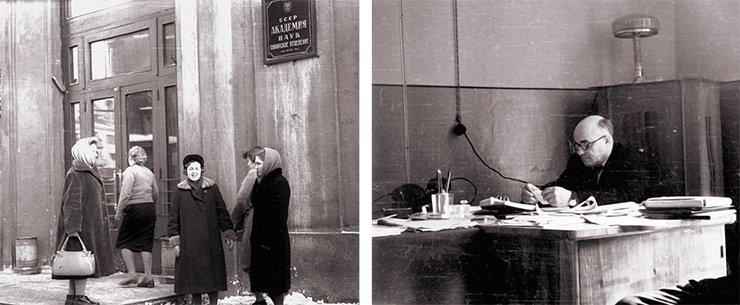
In 1958, the construction of Akademgorodok was just beginning; they were still felling the forest. During the first years, everyone was cooped up in a giant building downtown, on Sovetskaya street, 20, which hosted the whole Siberian Branch. At first, ICG employees occupied a single room; by spring of 1958, the Institute received half of the second floor of the building.
“HARMFUL AND IDEOLOGICALLY FOREGN…”The persecution of genetics in the USSR lasted from 1935 to the end of 1964, inspired by T. D. Lysenko, an experimentalist in agronomy. Based on his observations of the influence of temperature on the development of grains, the future Academician and Hero of Socialist Labor stipulated the theory of stage development of plants; the theory served as the basis of the yarovization technique (using low temperature influences on crops), which he ardently advertised.
Lysenko did not contain himself in promoting his ideas: “Scientific world or not, the class enemy is always an enemy, a scientist or not.”
The polemics between scientists dealing with problems of theoretical biology and genetics and the followers of Lysenko’s doctrines, known as “the Soviet creative Darwinism” or “Michurin’s teachings” (in fact, I. V. Michurin, who died in 1935, had very little to do with it) sparked in the mid‑1930s. One of the main theses of Lysenko’s teachings was the denial of genes and chromosomes as units and instruments of heredity. On the opposite, he considered heredity to be intrinsic to any particle of the living matter. The second thesis consisted in the inheriting of acquired traits. Yet another cornerstone was vegetative hybridization: Lysenko stated that grafting changed the plant’s heredity and the resulting “vegetative hybrids” were no different from regular hybrids. Thus Lysenko’s teachings were, in essence, a compilation of ideas which existed in biology in the 19th century.
By the time Lysenko became a member of VASKHNIL (ВАСХНИЛ, a Russian acronym for the V. L. Lenin All-Soviet Agricultural Academy), Lysenko’s followers were speaking of genetics (“mendelism-morganism”) as a metaphysical, idealistic capitalist science. The attempts of prominent scientists to appeal to facts proved fruitless: “lysenkists” referred to their own achievements in agriculture and drifted toward ideological and political accusations. The final discussion ended with a “disclosure”: “We will not speak with morganists; we will continue disclosing them as representatives of a harmful and ideologically foreign school, introduced from the alien abroad, scientifically false in its essence.” (VASKHNIL session stenographic report, 1948).
Not only ideas were repressed, but their carriers, too. In 1940, Academician N. I. Vavilov and his closest colleagues were arrested. Vavilov was sentenced to execution; the sentence was later changed to a 20-year imprisonment.
In 1948, relying on Stalin’s personal support, Lysenko organized the so-called August Session of VASKHNIL, “On the state of affairs in the biological science,” which resulted in the dismissal of the majority of geneticists and other biologists sharing their views. Teaching genetics was canceled, textbooks were seized from libraries and destroyed. By mid‑1950s, there were no genetics and geneticists in the USSR to be salvaged; after the August Session, there was nothing to be saved; one could only speak of the revival of genetics in the country.
The working conditions were Spartan: the Department of physical, chemical and cytological foundations of heredity occupied three rooms. The biggest room, where the cytologists worked, had three cubicles for the chief’s office and for the photobox. The second room was occupied by biochemists (there was no such thing as “molecular biologists” back then), and the third room, by physicists. By that time, we managed to get hold of some equipment: MBI‑3 microscopes, microtomes, thermostats, etc.
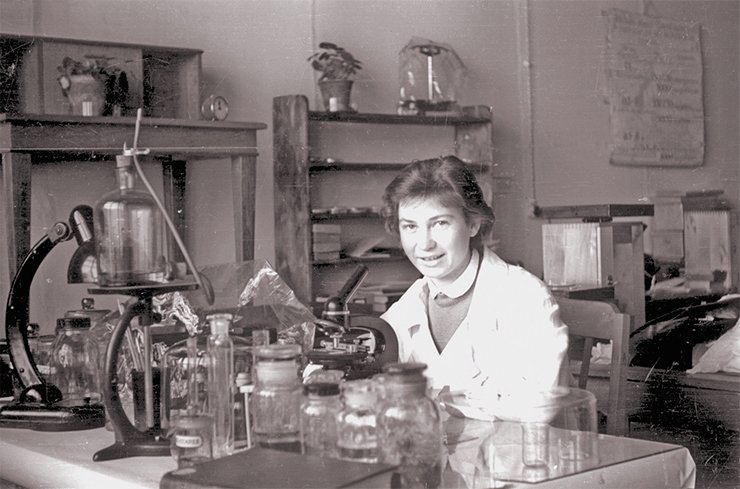
The study of the material foundations of heredity, from nucleic acids and genes to cytoplasmic organelles, was one of the most important fundamental research fields in the Institute. For many years, this sort of research was virtually forbidden in the USSR, while in the rest of the world, the science was progressing in great paces: they figured out the structure of DNA, studied the organization of many genes in a number of living organisms, scrutinized the structure of cell membranes, etc.
N. P. Dubinin (1973) wrote: “The first task in applied genetics was the implementing of the plans to create triploid hybrids of sugar beets … This happened in the time when the All-Union Sugar Beet Institute, located in Kiev, still condemned the polyploidy method as an “allegedly false, anti-Michurin fancy of “morganists-mendelists.”The summer of 1958 went well; in no time, we produced tetraploid sugar beets. Bearing in mind the importance of this work, we began to think about producing two to three generations of sugar beets a year. But this was impossible in the climatic conditions of Novosibirsk. We decided to send a brigade to an expedition to Abkhazia to force-grow three generations of plants. I came to Lavrentiev with these plans. He agreed with my arguments right away.
The brigade headed by V. A. Panin traveled to Abkhazia and spent several very difficult years there clinging selflessly to land and plants, which brought us closer to the dawn of new selection … the hardships of field work fell on the shoulders of several very young enthusiasts who worked in the brigade; they consulted with me throughout the work. By 1961, the brigade created the first triploid sugar beet strain, which raised the yield per hectare by 15 % … By 1972, nearly all sugar beet crops in the Kuban region were planted using our heterotic triploid material. This allowed producing 70 million rubles worth of extra sugar
The reason of this lag was clear: from the mid-thirties to late fifties, biology in the USSR was a battlefield spiced with tons of ideology. When the first founding documents of the Siberian Branch of the Soviet Academy of Sciences were published in the summer of 1957, including documents on the Institute of Cytology and Genetics, it came as a joyous surprise for Soviet scientists. For the first time since the sadly notorious August session of VASKHNIL in 1948 (Russian acronym for Lenin All-Union Agricultural Academy), when genetics was branded as “capitalist pseudoscience,” it was finally recognized as a legitimate branch of natural sciences in the Academy system.
The Noah’s Ark of Genetics
The creation of such an institute in lysenkovschina times was supported as early as in 1955 in the infamous “Letter of 300”, written by outstanding Soviet scientists, from mathematicians to biologists. Nuclear physicists played a very special role here, and especially I. V. Kurchatov, the father of the Soviet atomic industry and the driving force behind the letter, who persuaded M. A. Lavrentiev to push for the Institute of Cytology and Genetics to be included in the list of the first ten institutes of the Siberian Branch. This interest of nuclear physicists in the development of genetic research stemmed from the fact that back then very little was known about radiation and its possible damaging influence on the heredity of humans and other living organisms. It does not come as a surprise that the Institute had a laboratory of radiation genetics from the very beginning.
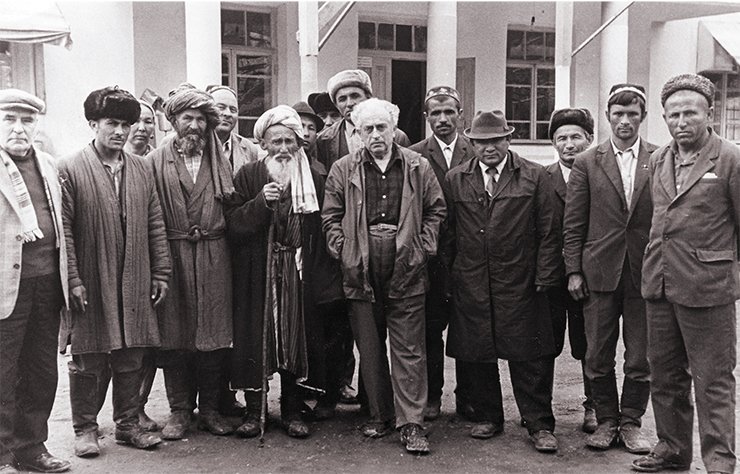
The founding director of the ICG, N. P. Dubinin – an outstanding classical geneticist and the informal leader of Soviet geneticists of the time – went through rough times after 1948, when he had to work outside his profession in the Forest Institute. It was shortly before the creation of the Siberian Branch that he came to be the head of the Radiation Genetics Laboratory in the Institute of Biophysics SB AS USSR, however, the creation of the namesake institute kept being postponed. It was then that Dubinin succumbed to Lavrentiev’s persuasions, who promised that in Siberia, “the business of developing genetics will have unlimited possibilities,” but played a crafty little trick with the name of the new institute, beginning it with a little-known term, cytology (the study of the cell and its structures). However, Lysenko’s zealots realized quite well that a new research center was being created beyond the Urals, which could lead to full recognition and further development of genetics in the USSR.
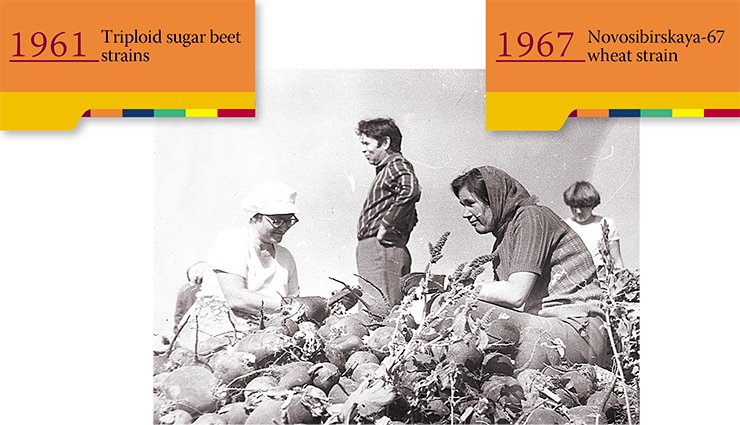
By the moment the ICG was founded, Soviet Russia had just a few remaining islets of classical genetics in several educational and academic organizations. These were the decimated remains of once powerful, internationally recognized Russian schools created in the 1930s by world-renowned scientists: N. K. Koltsov, A. S. Serebrovskiy, S. S. Chetverikov and N. I. Vavilov. After 1948, the vast majority of their colleagues and followers lost their jobs. Those who survived the repressions and the War, worked outside their profession: for instance, Yu. Ya. Kerkis, who was among the first researchers in the world to formulate the notion of disturbances in intracellular homeostasis as the reason of mutations, worked as a head of a sovkhoz farm; Z. S. Nikoro, a cytogeneticist and an apprentice of N. P. Dubinin, became a musician and played the piano; etc. For this reason, many of those who received Dubinin’s invitation volunteered to go to Siberia to their new workplace.

What the ICG became was not just the core of revival of the national genetics; it brought together representatives from all Moscow and Leningrad schools, who had been working autonomously and even competitively. This created a unique environment for integration, a merger of the best academic traditions for solving a single global task – the rehabilitation of genetics in the USSR.
The roots of integration
By the beginning of 1958, 25 people were working in the ICG, including 2 Doctors of Sciences and 5 Candidates of Sciences. The number kept growing, and those were not only “decorated” scientists, but also a lot of young people from universities and institutes in Moscow and other cities.
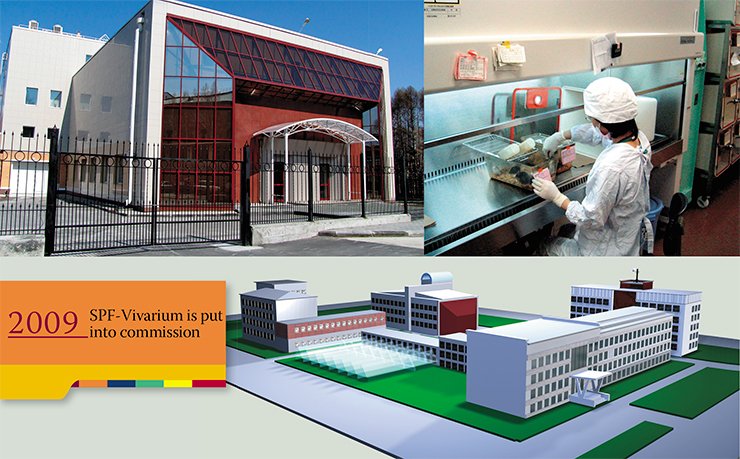
Over the last quarter of a century, the requirements to organizing all kinds of work with laboratory animals have become considerably more stringent in all developed countries of the world. An SPF (specific pathogen free) vivarium is a facility for keeping and breeding laboratory animals according to the accepted standards, i. e. without pathogenic microorganisms. This is because any infections are a source of variation in experimental data, interfering with their reliability.
According to current international rules, the main basic and applied studies aimed at elaborating new approaches to treating diseases and to elevating human physical and social welfare should be performed using animals kept in stringently controlled conditions; preclinical trials of new drugs and the biosafety assessment of new materials and products will be part of the work.
However, the keeping of SPF animals is only one side of the coin. Over 20,000 genetic strains of laboratory mice are now available. The creation of genetic models – experimental laboratory animals with specified genetic characteristics – has considerably accelerated in recent years, so that the number of such strains will exceed 300,000 in the next two decades.
Now over 20 national centers for genetic resources from North America, Europe, Asia, and Australia united by international organizations coordinate the activities in this field. Until recently, Russia had no analogs of such centers. However, limited genetic diversity of these animals considerably hindered basic science; and the conditions of their keeping, which did not meet the current international standards, interfered with putting innovations on the external market.
The new Center is involved in basic research in “postgenomic” systemic biology as well as in the studies of experimental genetic models of human diseases. The Center will become a test site for large-scale preclinical trials of pharmaceuticals and of the products containing genetically modified components.
In the developed countries, such centers are on the list of national priorities and can be regarded as a symbol of statehood along with the hymn, emblem, and flag. There is nothing surprising about it: such genetic centers are an indispensable element of the science and technology complex designed to solve one of the main problems a country faces – to contribute to the health of the nation through improving the health of its citizens.
In the beginning, we lived in a dormitory, which was situated in several 2- to 3-apartment houses in Zaeltsovskiy Bor, a Scots pine forest outside Novosibirsk; overall, about fifty came to live there. I remember the dormitory in a three-room apartment on Derzhavina street, where 4 economists, 3 chemists and 4 geneticists lived together. The economists often quarreled with the chemists, and yet everyone was very interested in genetics. In about a year, I heard them quarreling and calling each other mutants, homozygotes and other purely genetic terms, i. e. in their speech, they used genetics argo as swearwords.
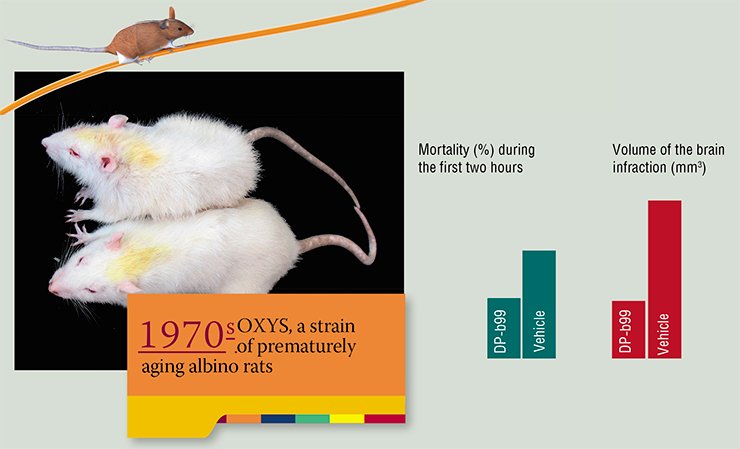
The “elderly” diseases are frequently developing in humans in parallel with and on the background of a set of aging manifestations. Creation of the models simulating such situation is a complex problem. In fact, a single accepted model of accelerated senescence – SAM (senescence accelerated mouse)—exists in the world; it was created by Japanese scientists and is currently represented by 12 substrains. According to our studies, the rat strain OXYS, created at the Institute of Cytology and Genetics SB RAS in the 1970s by the team of Academician R. I. Salganik, can be a full-fledged model for accelerated senescence and related diseases. The development of a set of acceletared senescence signs in these animals resulted from a directed selection of Wistar rats for early spontaneous cataract.
Currently, accelerated aging manifests itself in a 28 % shorter lifespan as compared with the intact Wistar strain and in an early development of phenotypic aging changes and age-dependent diseases on the background of an early involution of the thymus and a decrease in the activity of the T-cell component of the immune system. This model is efficiently used for a rapid assessment of new diagnostic, prevention, and therapeutic tools for various age-related diseases and prevention of accelerated senescence.
The trials using OXYS rats were sufficient to demonstrate the ability of the mitochondrion-targeted antioxidant SkQ (“Skulachev ions”), synthesized by the team of Academician V. P. Skulachev, not only to prevent and hinder the development of cataract and retinal dystrophy, but also to alleviate the already developed pathological changes to their complete disappearance.
I have come to realize that this anecdote is in fact, a curious illustration of Lavrentiev’s initial idea. He was, without doubt, a managing genius, and was facing two major tasks – strategic and current. Actually, he was creating the Academy of Sciences of the Russian Federation, because all other Soviet republics had their own academies already. His idea was to organize it far away from Moscow, in an industrial Siberian city.
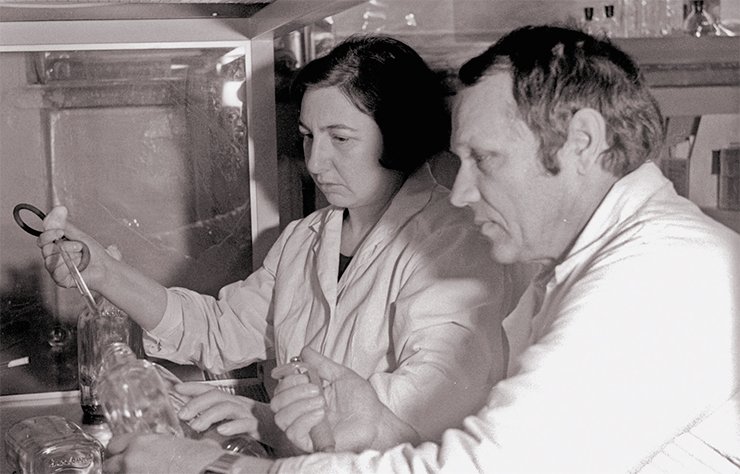
The hypertensive NISAG (ISIAH) strain rats with a stress-sensitive arterial hypertension have been produced through a long-term selection for the level of arterial pressure under conditions of mild emotional stress (Markel, 1985, 1991). Study have demonstrated that the NISAG rats actually display a genetically determined increase in the sensitivity to stress factors, which appears, first and foremost, as a development of stable hypertensive status. With a decreased response threshold to external stimulation, the arterial pressure can increase under routine “normal” conditions.
The mechanisms involved in the development of arterial hypertension in NISAG rats adequately reflect the pathogenesis of human hypertension in urban populations. This fit was observed not only at the level of neuroendocrine and morphophysiological responses, but also in the behavioral patterns (high motivation to compete for “life’s comforts,” elevated aggressiveness, and increased exploratory activity). This close similarity between our experimental model for hypertension and the corresponding human pathology allows the NISAG rats to be used not only for studying the mechanisms involved in the development of hypertensive states, but also in the search for and testing of new drugs for the prevention and treatment of hypertension and its complications.
It is known that a severe complication of hypertension is brain stroke. It has been found that the NISAG rats are very sensitive to any impairments of the cerebral blood circulation. Even a weak deficiency in blood supply to certain brain regions can lead NISAG rats to an extensive brain stroke and even a lethal outcome. This made NISAG strain an indispensable experimental model in the search for pharmacological preparations to control brain stroke.
The strategic task, a very deep one, was to build Akademgorodok, where representatives of different sciences would live and work side by side. From the very beginning, this task had a component of integration, which eventually developed dramatically, especially in the times when the Siberian Branch was headed by Academicians V. A. Koptyug and N. L. Dobretsov. The very fact that we, a bunch of green graduates, were mixed and matched regardless of our specialization, probably was not a coincidence.
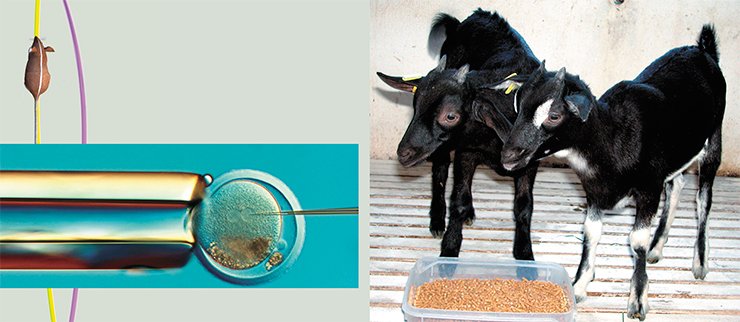
Production of therapeutically valuable human proteins is a promising direction in modern biotechnology. The strategy for the creation of dairy cattle as bioreactors involves insertion of a combined genetic construct carrying the human DNA sequence encoding a necessary protein into the region controlled by the regulatory elements of animal “milk gene.” According to this strategy, thus created transgenic animals are able to synthesize large amounts of the corresponding human protein exclusively in the mammary gland and secrete it into milk.
The projects on creation of transgenic bioreactors usually comprise three stages: production of the genetic construct with a human gene under the control of regulatory regions of a “milk gene” (for example, casein), testing of this construct in transgenic mice, and, eventually, insertion of the selected constructs into the genome of dairy cattle.
Creation of an efficient producer is a stroke of good luck and a guarantee that a herd of its offspring will be produced in relatively short terms to supply the market with valuable pharmaceutical product. A laboratory is organized for such a herd to isolate and purify the recombinant protein; this protein is conveyed to the corresponding pharmaceutical institutions for testing, performance of preclinical and clinical trials, and approval of its use in medical practice.
In July 2006, the joint Russian – Brazilian project conducted by the Institute of Cytology and Genetics succeeded in creating a first transgenic goat carrying the human G-CSF gene which codes a granulocyte colony-stimulating factor, widely used in the treatment of the consequences of radiation therapy and chemotherapy as well as in the regeneration medicine. (Serov, Serova, 2008)
One acknowledge the ingenuity of Lavrentiev: interdisciplinary projects began budding right from the start. For instance, our famous cyberneticist and mathematician, A. A. Lyapunov, who had a keen interest in biology and was an vocal opponent of lysenkovschina, set up a new specialization program within the Department of Natural Sciences of the NSU – Mathematical Biology.
A rough path
In 1960, the Institute saw several extensions: the Experimental Farm of the SB AS USSR for creating new breeds of cattle and furbearers, the Genetics and Selection Center, and new land for experimental fields for plant selection laboratories.
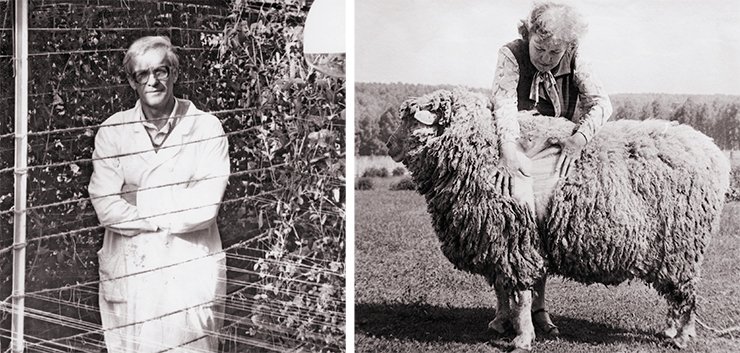
<…> The domestication experiment offers an insight into the species’ potential. Science can, if necessary, implement any of such possibilities».
The construction of a new building for the Institute began: by 1961, there were 12 labs and over 280 employees. In autumn, the first students came to the new Medical Biology Division of the Natural Sciences Department of the NSU. Its specially developed study programs were supplemented by guest lectures of major scientists from Moscow and Leningrad.
However, throughout all these years, up until Khrushchev’s resignation in 1964, the ICG remained semi-illegal, always on the brink of complete dismissal. One of the first victims was Dubinin, who basically lost his directorial position in 1960 following a direct order of Khrushchev, for “morganism-weismanism.” Lavrentiev interfered but only managed to secure his own right to choose a successor candidate. It was Dubinin’s deputy, the head of the Genetics Department, Dmitriy Konstantinovich Belyaev.
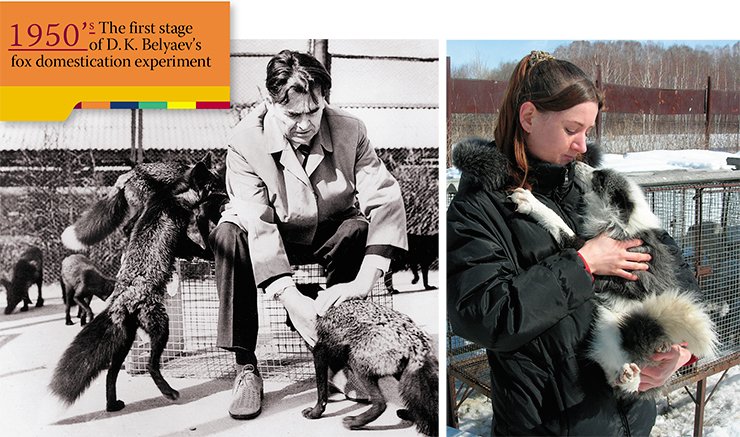
The large-scale experiment reproducing the earliest stage of domestication was commenced by prof. D. K. Belyaev as long ago as in the early 1950s with silver-black foxes. The essence of this experiment was the selection of foxes for the tolerance to humans. As a result, a unique population of domesticated foxes, known worldwide, was created.
The results of an unusual evolutionary experiment have demonstrated that the genetic transformation of behavior (from wild to domesticated) entails the morphological and physiological changes similar to those that took place in the past in dogs and other domestic animals. Of the physiological changes, note first an increase in the activity of the most important vital function, reproduction, and weakening of the functional state of the hormonal system underlying adaptation and stress, the pituitary – adrenal system. In other words, the selection according to behavior pattern disrupts the physiological and morphological systems created and maintained in nature by stabilizing selection.
A similar character of the changes in animals under domestication as well as the fact that they occur quickly is hardly explainable from the standpoint of trivial genetic mechanisms. Belyaev formulated a principally new concept of naturally present destabilizing selection as a specific form of directional selection, which results in destabilization of the regulatory systems of ontogenesis (individual development) and, as a consequence, a drastic increase in the rate of morphogenesis.
As US geneticist G. Lark expressed in 2003: “It becomes ever clear to me that the experiment with foxes is one of the actually grandest experiments over several last decades. As if you in Novosibirsk knew beforehand what would be needed in future for the integrative genetics of quantitative traits. Doubtlessly, Belyaev was a great personality.”
Geneticists were incessantly bothered by commissions sent the Party Central Committee and personally by Lysenko; those commissions had clear directives – to close the Institute or at least bring it back to the tracks of Michurin’s biology by replacing its chief executives and laboratory heads. Lavrentiev always received these people personally and showed them around. One time after one of these checks he came to Belyaev and said, quoting a Russian folk saying (literally): “These men are hedgehogs and they’ve got shivs hidden in their boots.”These inspections often left the Institute one foot in the grave – a complete dismissal or change of research profile – and Lavrentiev, our guarding angel, went out of his way to find extraordinary solutions.
For the first visit of Khrushchev to Akademgorodok, the ICG geneticists prepared an exposition of their achievements: new plant strains, antiviral chemicals, furbearing animals with unusual fur colors, and the first corn hybrid. Mikhail Lavrentiev, who inspected the exposition before the visit, took a long time to look at their stand, gave it a thought and decided: to move all objects into a separate room, lock that room – and that he should take the key! Belyaev tried to argue, but Lavrentiev patted his shoulder and said: “I separated the church from the state.”Here is a story that sounds more like a joke. During his second visit to Akademgorodok, the first thing Khrushchev asked Lavrentiev was: “How are your Weissman-Morganists doing?” Lavrentiev dodged: “I am a mere mathematician. I do not know a thing about genetics, and I have no idea which of them are Weissmanists – they do not wear badges, you know.” Khrushchev replied with a joke about two belligerent men – an Abkhazian and a Georgian, – who argued about what was in the sky – the Moon or the Crescent. When the clash got out of hand, a Ukrainian approached. The arguing men asked him to be the judge. The Ukrainian looked at the sky, glanced at the men’s knives and said: “You know, guys… I’m not from here!” “You are like this Ukrainian, – Khrushchev said, – I’m asking you about these people and you are asking me who they are.” Surprisingly enough, that particular visit went more or less smooth.
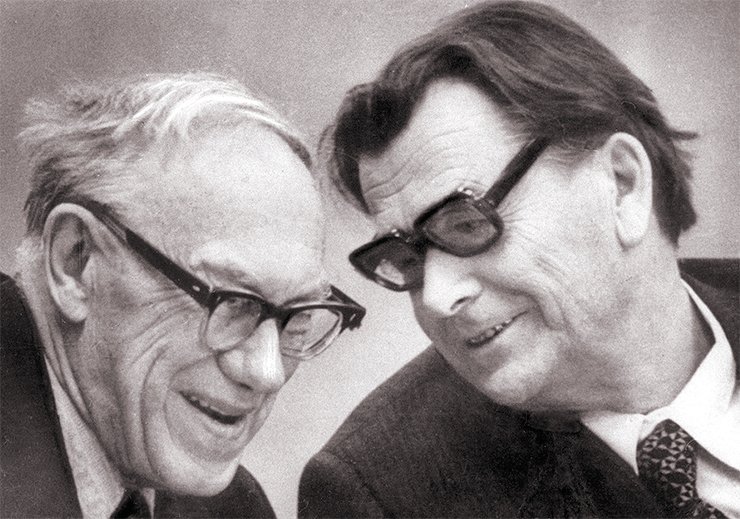
But we must procure the new academic centers with people who are able to move science forward, so that their labor provides the necessary help to the industry. This is not always taken into consideration. It is a known fact, for example, that the Institute of Cytology and Genetics is being built in Novosibirsk. Its appointed director is the biologist Dubinin, who is an opponent of Michurin’s theory. The works of this scientist are of very little scientific and applied purpose. If anything makes Dubinin famous, it is his papers and speeches against the theoretical statements and practical recommendations of Academician Lysenko”.
My director’s fate in Novosibirsk was doomed.”
One time, a commission came to the Institute, headed by an aggressive follower of Lysenko, adamant in their intent to shut down the Institute. After a tour around the ICG premises, they came to Mikhail Alekseevich. But as soon as they began to talk about the Institute and how it failed to conform to the Party policy, the phone rang. Lavrentieve answered: “Hello! … The Central Committee? … What Party policies? … And I have got comrades here who are saying just the opposite… Mistaken, you say? … Okay … Thank you!”. The commission left “empty-handed.” We asked Lavrentiev about the identity of the caller many times, but it was much later that he admitted that it was S. A. Khristianovich, who was sitting in the next room.”
By the way, it was Khrushchev to who we owe the current layout and appearance of Akademgorodok. During his first visit, the Chief Secretary was very unhappy about the “chic” and “wrong” apartment houses and ended up “halving” the academic hotel and ordered that khrushchevka-type panel houses be built in the future, and not the so-called “full-scale” houses with larger, more convenient apartments. The first apartment I got was in one of these khrushchevkas.
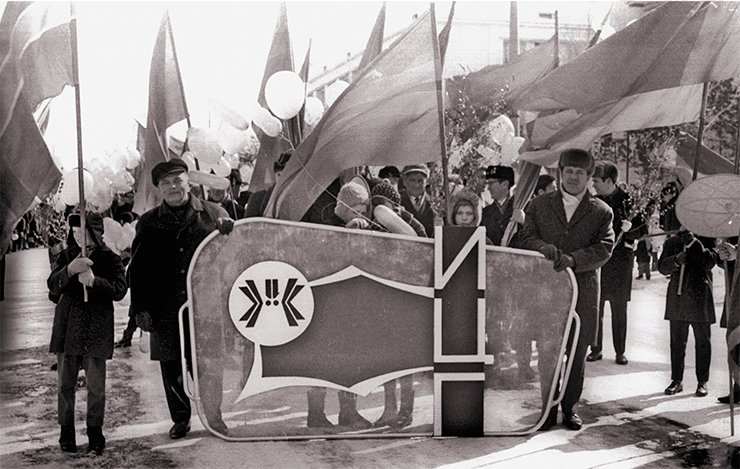
The construction of the main building began only in 1962. The construction supervisor asked the researchers to give lectures to the workers so that they knew what they were building. We made a chart and once every week one of us would tell the builders about genetics and laws of heredity. They were an attentive audience and asked a lot of questions. It is hard to imagine a relationship like that nowadays…
For almost a decade from its establishment, up until the creation of the Institute of Basic Genetics of the USSR AS in Moscow in 1966, the Institute of Cytology and Genetics in Novosibirsk remained a single major complex genetics research institution in the country, where representatives of all major genetics schools worked, and where all major branches of theoretical and applied genetics of all levels of the structure of the living things were given a boost.
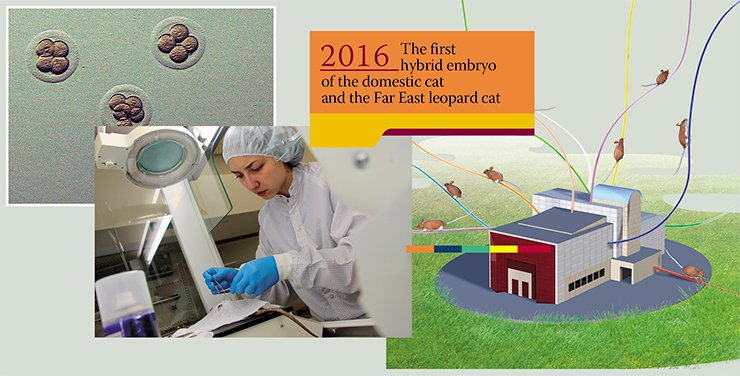
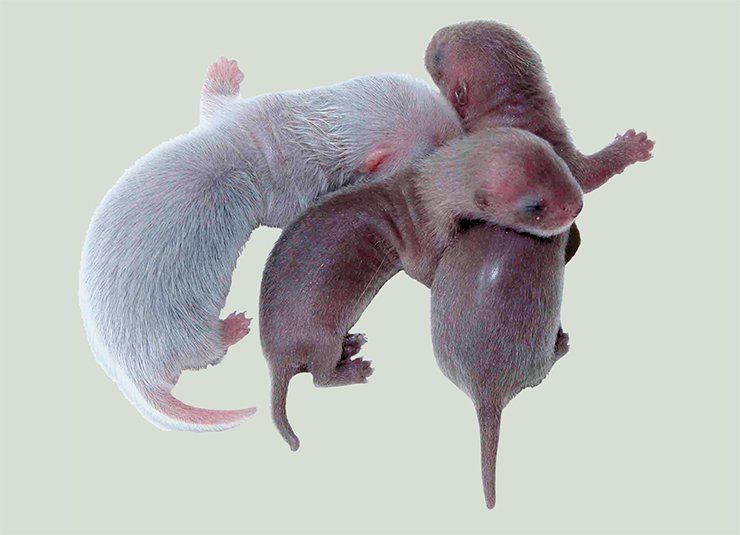
Today, there are over twenty cryobanks all over the world, preserving genetic material not only from laboratory animals, but from wild and endangered animal species as well. With cryogenically preserved gametes and/or embryos, with the use of artificial insemination, reproductive cloning and embryo transplant methods, live individuals can be successfully recreated. Such cryobank, unparalleled within the country, exists in the SPF-Vivarium of the ICG SB RAS.
The creation of a cryobank is not limited to the most sparing method of freezing and cryogenic storage of materials; methods of defreezing and extracting of genetic information are no less important.
Speaking of laboratory mice and rats, the transition of the frozen material into a living being is relativey simple: embryos are defrozen and implanted to females of the same species. But what kind of surrogate mom does it take to transplant gametes or embryos of a rare species – or even a species bordering extinction? At last, we found an interesting approach to solving this problem. According to the initial hypothesis, interspecific hybrids must make perfect recipients for embryos of two “parent” species.
Researchers from Akademgorodok successfully tested this assumption with the European mink, a species facing extinction. In this case, hybrids of ferret and mink (another mustelid), which can be easily created on farms where both of these species are bred, became the surrogate mothers. However, in the work with ferrets and minks, fresh embryos were transplanted, i. e. they were not subjected to cryoconservation. For further research, two closely related species of dwarf hamsters were chosen – the Djungarian hamster (Phodopus sungorus) and the Cambell hamster (Phodopus campbelli). Novosibirsk scientists were the first in the world to successfully freeze and cultivate embryos of these laboratory animals. Experiments have shown that these embryos develop successfully in surrogate hybrid mothers.
In the autumn of 1964, N. S. Khrushchev resigned; this coincided with the debunking of Lysenko’s “achievements.” In November, an article authored by D. K. Belyaev appeared in the Pravda; it provided a program of genetics revival in the USSR. Among other things, Belyaev wrote about changing the teaching courses in higher education institutions, creating a society of geneticists and selectionists with a corresponding academic journal, and employment of specialists qualified in genetics in all institutions dealing with selection. This was the beginning of a new age in the history of national genetics.
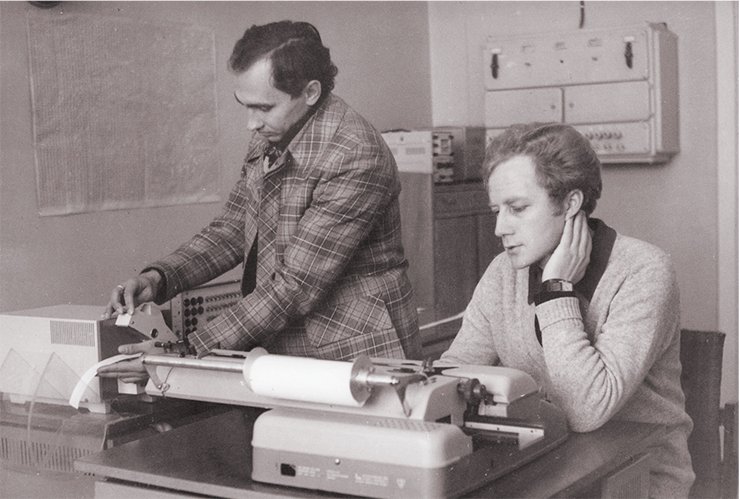
References
Dubinin N. P. Vechnoe dvizhenie (O zhizni i o sebe). M.: Politizdat, 1973. 447 p. [in Russian]
Dmitriy Konstantinovich Belyaev: Book of memories. Novosibirsk: SB RAS. Geo Branch, 2002. 284 p. [in Russian]
Shumnyi V. K., Zakharov I. K., Kiknadze I. I. et al. Genetika prirastaet Sibir’yu: Pervye dva desyatiletiya Instituta tsitologii i genetiki SO AN SSSR – nachalo i stanovlenie. Novosibirsk: ICG SB RAS, 2012. 354 p. [in Russian]
The publication uses photographs from the archive of the ICG SB RAS.


